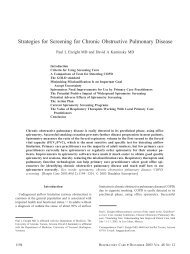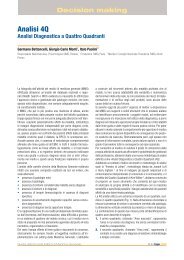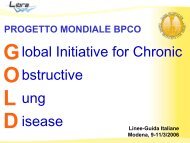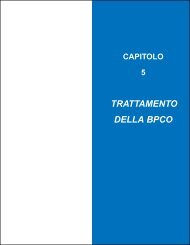Clinical Commentary 601 patients who appear otherwise clinically stable (41, 42) but with evidence of further increase during exacerbations (43). Additionally, the presence of systemic inflammation does not appear to be unique to <strong>COPD</strong> but also occurs in other chronic diseases and even during normal aging. As it relates to phenotyping, thus far no clear relationship between systemic inflammation and a particular aspect of <strong>COPD</strong> (such as the severity of airflow limitation or the presence of emphysema, airway colonization, arterial hypoxemia, comorbidities, or symptoms), has clearly emerged. Thus, at this point in time it is unclear what mechanisms drive the presence, type, and/or severity of systemic inflammation in any given patient. It is also unclear whether therapy aimed at optimizing pulmonary function in <strong>COPD</strong> results in a reduction of systemic inflammation in these patients (44, 45) or whether the direct targeting of systemic inflammation influences the natural history of <strong>COPD</strong>. Comorbidities Patients with <strong>COPD</strong> often present with comorbid diseases, including cardiovascular disease, metabolic syndrome, osteoporosis, depression, and skeletal muscle wasting and dysfunction (46, 47). Systemic inflammation may contribute to the development of comorbid conditions and these disorders can be seen as manifestations of <strong>COPD</strong> or vice versa (48). Accelerated aging is a further process that could account for both the local lung effects of <strong>COPD</strong> and its comorbidities (49). Aging is characterized by a progressive, generalized impairment of function and amplification of the inflammatory response (50) that results in an increased vulnerability to environmental challenge and an increased risk of disease. The presence of many of these comorbidities appears to have a deleterious effect on several outcomes in <strong>COPD</strong> (51). In particular, diabetes, hypertension, cardiovascular disease, and cancer increase the risk of death in <strong>COPD</strong> (51). However, whether treatment of comorbid conditions alters the natural history of <strong>COPD</strong> or whether treatment of <strong>COPD</strong> is altered by the presence of a concomitant comorbidity awaits further study. MULTIDIMENSIONAL INDICES Recently several multidimensional indices have been described for prognostic purposes in <strong>COPD</strong>. Perhaps best well known of these is the BODE Index to predict mortality, which incorporates dyspnea, BMI, FEV 1 , and exercise capacity as measured by 6-minute walk distance (6MWD). Modifications of the BODE index have also been described, including the mBODE (replaces 6MWD with _ VO 2 ) (52), e-BODE (BODE plus exacerbations) (53), and BODE-x (substitution of exacerbations for exercise capacity) (53), as well as the ADO index (dyspnea, FEV 1 , and age), which are all better predictors of mortality in <strong>COPD</strong> than FEV 1 alone (6, 54). Other indices that have been described include the <strong>COPD</strong> Prognostic Index (QOL, FEV 1 , age, sex, BMI, exacerbation history, cardiovascular disease history) (55) that predicts mortality, hospitalization, and exacerbation frequency, the SAFE Index (QOL, FEV 1 , 6MWD) (56) to predict exacerbation frequency, and the DOSE Index (dyspnea, smoking status, FEV 1 , and prior exacerbation history), which also predicts exacerbations (57). From the standpoint of clinical phenotyping, such multidimensional indices are useful in their ability to group patients in terms of clinically relevant outcomes. However, from a research standpoint, a note of caution is warranted. Although it is possible that the seemingly diverse measures included in a multidimensional index actually relate to a shared latent variable responsible for the clinical presentation, it is also possible that by grouping patients in this fashion we may be blurring distinct features of the disease that may hamper our understanding of the biologic or physiologic basis for the shared outcome. WHERE DO WE GO FROM HERE? The identification of <strong>COPD</strong> <strong>phenotypes</strong> will require an iterative validation process in which candidate <strong>phenotypes</strong> are identified before their relevance to clinical outcome is determined (Figure 1). As research is currently advancing on all fronts simultaneously, there are multiple points of entry into this process of phenotype identification (see Figure 1). Borrowing from the field of breast cancer, initially hormone-based therapies were tested in the general breast cancer population, but it was ultimately determined that that the presence of estrogen and progesterone receptors within the tumor determined the response to therapy (58). In asthma, cellular <strong>phenotypes</strong> of asthma (eosinophilic, neutrophilic, and paucigranulocytic) were identified by analyses of sputum and subsequently used to direct the successful application of mepolizumab (anti–IL-5) therapy (59). In <strong>COPD</strong>, roflumilast was initially studied in a general <strong>COPD</strong> population, but it was ultimately determined that it is a subpopulation of patients (FEV 1 , 50% predicted, chronic cough, and sputum production) who demonstrate the greatest clinical response. Mechanistic studies, however, will be needed to understand the biologic basis for response in this subgroup. From a practical standpoint, validation of <strong>phenotypes</strong> in <strong>COPD</strong> will require longitudinal data collection in carefully characterized patient populations. Studies such as Evaluation Figure 1. Ideal phenotyping construct wherein candidate <strong>phenotypes</strong> are validated once their relevance to clinical outcomes is established. There are multiple potential points of entry into this iterative process of phenotype identification. For instance, similar clinical outcomes may define a subpopulation that leads to the identification of a biologic target and focused therapy. Alternatively, the process might begin with the differentiation of subgroups based on a biologic marker that is then validated by similar clinical response within subgroups.
602 AMERICAN JOURNAL OF RESPIRATORY AND CRITICAL CARE MEDICINE VOL 182 2010 of <strong>COPD</strong> Longitudinally to Identify Predictive Surrogate Endpoints (ECLIPSE), Subpopulations and intermediate outcome measures in <strong>COPD</strong> (SPIROMICS), and <strong>COPD</strong>Gene that are systematically gathering clinical, physiologic, radiologic, biologic, and genetic data on <strong>COPD</strong> subjects will aid in this regard. Additionally, advanced statistical techniques may also prove useful in identifying candidate phenotypic subgroups. One such example is cluster analysis, which has a basis both in mathematics and biology and is a technique for data exploration. Cluster analysis encompasses a number of different algorithms for grouping subjects without an a priori hypothesis. A related statistical technique, factor analysis, may also prove useful in <strong>COPD</strong> phenotyping. Although the goal of cluster analysis is to reduce the number of observations or cases by grouping them into a smaller set of clusters, the goal of factor analysis is to reduce the number of variables by grouping them into a smaller set of factors. Cluster and factor analysis have been used in conjunction in <strong>COPD</strong> to identify key variables on which to select clusters of related patients (60–63). These types of analyses would still, however, require longitudinal validation to determine how such clustered subjects differ with respect to important clinical outcomes. In addition, such analyses may or may not ultimately be useful in defining specific biologic pathways or therapies. The suggested schema for phenotype identification, however, represents an ideal construct, as almost every outcome measure other than death displays inherent difficulties with measurement. Furthermore, for every phenotype, a specific therapy may not be ultimately identified. An individual’s phenotype may not be readily apparent at an early stage of disease. It may also be that any one individual has the potential to express a range of <strong>phenotypes</strong> that are ultimately determined by the individual’s unique biology and exposures. Finally, it should be recognized that most cellular functions (and their perturbations in disease states) are performed by a complex network of genes, proteins, and metabolites that interact through biochemical and physical interactions. The new field of systems biology has begun to relate these ‘‘omic’’ networks to disease networks (comorbidities) and even social networks (smoking, obesity). Consequently, the concept of a ‘‘diseasome,’’ linking cellular networks and phenotypic manifestations, is beginning to emerge. Such research strategies may also prove valuable in identifying relevant and novel <strong>phenotypes</strong> in <strong>COPD</strong>. Author Disclosure: M.K.H. received up to $1,000 from Novartis in consultancy fees, $1,001–$5,000 from CSL Behring in advisory board fees, $5,001–$10,000 from GlaxoSmithKline in lecture fees, and up to $1,000 from UpToDate in royalties. A.A. received $5,001–$10,000 from GlaxoSmithKline, $5,001–$10,000 from Almirall, and $5,001–$10,000 from Nycomed in advisory board fees; $5,001–$10,000 from GlaxoSmithKline, $5,001–$10,000 from AstraZeneca, and $5,001–$10,000 from Almirall in lecture fees; and more than $100,001 from GlaxoSmithKline, $10,001–$50,000 from Pfizer, $5,001–$10,000 from Boehringer Ingelheim, and more than $100,001 from Almirall in industrysponsored grants. P.M.C. received $5,001–$10,000 from Pfizer, $1,001– $5,000 from AstraZeneca, and $5,001–$10,000 from Chiesi in consultancy fees; $5,001–$10,000 from GlaxoSmithKline in advisory board fees; $1,001–$5,000 from Altana and $10,001–$50,000 from GlaxoSmithKline in lecture fees; and $10,001–$50,000 from Nycomed, $50,001–$100,000 from GlaxoSmithKline, and $10,001–$50,000 from Boehringer Ingelheim in industry-sponsored grants. B.R.C. does not have a financial relationship with a commercial entity that has an interest in the subject of this manuscript. G.C. received $1,001–$5,000 from Boehringer Ingelheim, $1,001–$5,000 from GlaxoSmithKline, and $1,001– $5,000 from Aeris in industry-sponsored grants for a research study. J.L.C. received $1,001–$5,000 from AstraZeneca in honorarium for a nonpromotional lecture (November 2007), and $10,001–$50,000 from Boehringer Ingelheim in industry-sponsored grants (BI Protocol 205.325, which ended September 30, 2008). L.M.F. received $10,001–$50,000 from Nycomed, $10,001–$50,000 from GlaxoSmithKline, $10,001–$50,000 from Merck Sharpe & Dohme, $10,001–$50,000 from Sigma-Tau, $10,001–$50,000 from AstraZeneca, $50,001–$100,000 from Boehringer Ingelheim, and $50,001–$100,000 from Chiesi Farmaceutici in consultancy fees; $1,001–$5,000 from Nycomed, $1,001– $5,000 from AstraZeneca, $1,001–$5,000 from Abbott, $1,001–$5,000 from Boehringer Ingelheim, $1,001–$5,000 from Chiesi Farmaceutici, $1,001–$5,000 from GlaxoSmithKline, $1,001–$5,000 from Merck Sharp & Dohme, $1,001– $5,000 from Novartis, $1,001–$5,000 from UCB, $1,001–$5,000 from Roche, and $1,001–$5,000 from Pfizer in advisory board fees; $1,001–$5,000 from AstraZeneca, $1,001–$5,000 from Abbott, $1,001–$5,000 from Boehringer Ingelheim, $1,001–$5,000 from Chiesi Farmaceutici, $1,001–$5,000 from GlaxoSmithKline, $1,001–$5,000 from Merck Sharp & Dohme, $1,001–$5,000 from Novartis, $1,001–$5,000 from Sigma-Tau, $1,001–$5,000 from UCB, $1,001–$5,000 from Roche, and $1,001–$5,000 from Pfizer in lecture fees. L.M.F.’s dependent received $50,001–$100,000 from Nycomed, $50,001– $100,000 from Abbott, $50,001–$100,000 from AstraZeneca, $50,001– $100,000 from Boehringer Ingelheim, $50,001–$100,000 from Menarini, $50,001–$100,000 from Schering Plough, $50,001–$100,000 from Chiesi Farmaceutici, $50,001–$100,000 from Sigma-Tau, $50,001–$100,000 from Novartis, $50,001–$100,000 from GlaxoSmithKline, $50,001–$100,000 from Merck Sharp & Dohme, $50,001–$100,000 from UCB, and $50,001– $100,000 from Pfizer in industry-sponsored grants. J.G.G. received more than $100,001 from MedQIA in an industry-sponsored grant. P.W.J. received $5,001– $10,000 from GlaxoSmithKline, $1,001–$5,000 from Almirall, $5,001–$10,000 Spiration, and $5,001–$10,000 from Novartis in consultancy fees; $5,001– $10,000 from GlaxoSmithKline, $5,001–$10,000 from Almirall, $1,001–$5,000 from AstraZeneca, $1,001–$5,000 from Roche, and $5,001–$10,000 from Spiration in advisory board fees; and $10,001–$50,000 from GlaxoSmithKline and $1,001–$5,000 from AstraZeneca in lecture fees. W.M. received $1,001– $5,000 from Pfizer Pharmaceuticals in consultancy fees, $1,001–$5,000 from GlaxoSmithKline and $1,001–$5,000 from Pfizer in advisory board fees, $5,001– $10,000 from GlaxoSmithKline and $5,001–$10,000 from AstraZeneca in lecture fees, and more than $100,001 from GlaxoSmithKline and more than $100,001 from Pfizer in industry-sponsored grants. B.J.M. does not have a financial relationship with a commercial entity that has an interest in the subject of this manuscript. K.F.R. received $10,001–$50,000 from Nycomed and $5,001– $10,000 from Forest in consultancy fees; $5,001–$10,000 from AstraZeneca, $5,001–$10,000 from Boehringer Ingelheim, $5,001–$10,000 from Chiesi, $5,001–$10,000 from Novartis, and $1,001–$5,000 from Pearl in advisory board fees; $1,001–$5,000 from Merck Sharpe and Dohme, $1,001–$5,000 from GlaxoSmithKline, $1,001–$5,000 from Chiesi, and $1,001–$5,000 from Boehringer Ingelheim in lecture fees; and $5,001–$10,000 from Nycomed and $5,001–$10,000 from Forest for serving as an expert witness. K.F.R.’s dependent received more than $100,001 from Chiesi, $50,001–$100,000 from AstraZeneca, more than $100,001 from Boehringer Ingelheim, and $10,001–$50,000 from Novartis in industry-sponsored grants. S.I.R. received $1,001–$5,000 from Able Associates, up to $1,000 from Adelphi Research, $10,001–$50,000 from Almirall/Prescott, $1,001–$5,000 from APT Pharma/Britnall, $1,001–$5,000 from Aradigm, $1,001–$5,000 from AstraZeneca, $5,001–$10,000 from Boehringer Ingelheim, up to $1,000 from Chiesi, up to $1,000 from Common Health, up to $1,000 from Consult Complete, $1,001–$5,000 from <strong>COPD</strong>Forum, up to $1,000 from Data Monitor, up to $1,000 from Decision Resources, up to $1,000 from Defined Health, $1,001–$5,000 from Dey, up to $1,000 from Dunn Group, up to $1,000 from Eaton Associates, up to $1,000 from Equinox, up to $1,000 from Gerson, $10,001–$50,000 from GlaxoSmithKline, up to $1,000 from Infomed, up to $1,000 from KOL Connection, up to $1,000 from M. Pankove, up to $1,000 from MedaCorp, up to $1,000 from MDRx Financial, up to $1,000 from Mpex, $10,001–$50,000 from Novartis, $10,001–$50,000 from Nycomed, $1,001–$5,000 from Oriel Therapeutics, $1,001–$5,000 from Otsuka, up to $1,000 from Pennside Partners, $5,001–$10,000 from Pfizer (Varenicline), up to $1,000 from PharmaVentures, $1,001–$5,000 from Pharmaxis, up to $1,000 from Price Waterhouse, up to $1,000 from Propagate, up to $1,000 from Pulmatrix, up to $1,000 from Reckner Associates, up to $1,000 from Recruiting Resources, $1,001–$5,000 from Roche, up to $1,000 from Schlesinger Medical, up to $1,000 from Scimed, up to $1,000 from Sudler and Hennessey, $1,001– $5,000 from TargeGen, $1,001–$5,000 from Theravance, $1,001–$5,000 from UBS, $1,001–$5,000 from Uptake Medical, and $5,001–$10,000 from Vantage Point Mgmt in consultancy advisory board fees; $10,001–$50,000 from Astra- Zeneca, $5,001–$10,000 from Boehringer Ingelheim, $10,001–$50,000 from Creative Educational Concept, $5,001–$10,000 from the France Foundation, $1,001–$5,000 from Information TV, $1,001–$5,000 from the Network for Continuing Ed, $10,001–$50,000 from Novartis, $1,001–$5,000 from Pfizer, and $1,001–$5,000 from SOMA in lecture fees; $50,001–$100,000 from AstraZeneca, $50,001–$100,000 from Biomarck, $50,001–$100,000 from Centocor, $50,001–$100,000 from Mpex, $50,001–$100,000 from Nabi, $50,001– $100,000 from Novartis, and $50,001–$100,000 from Otsuka in industrysponsored grants. S.I.R. filed provisional patent applications from the University of Nebraska Medical Center covering microRNA applications for the treatment of diseases (currently marketing to various commercial entities). S.I.R. received funding from RJ Reynolds to evaluate the effect of a harm reduction product in normal smokers (1996) and in subjects with chronic bronchitis (1999) and to assess the effect of smoking cessation on lower respiratory tract inflammation (2000); participated in a Philip Morris multicenter study to assess biomarkers of smoke exposure (2002); received funding for a clinical trial from the Institute for Science and Health (2005), which receives support from the tobacco industry, to evaluate biomarkers in exhaled breath associated with smoking cessation and reduction. This study was supplemented with funding from Lorillard and RJ Reynolds. S.I.R. received a grant from the Philip Morris External Research Program (2005) to assess the impact of cigarette smoking on circulating stem cells in the mouse. S.I.R. has consulted with RJ Reynolds on the topic of harm reduction until 2007, but did not receive personal remuneration for this. There are no active tobacco industry–funded projects. All ties with tobacco industry


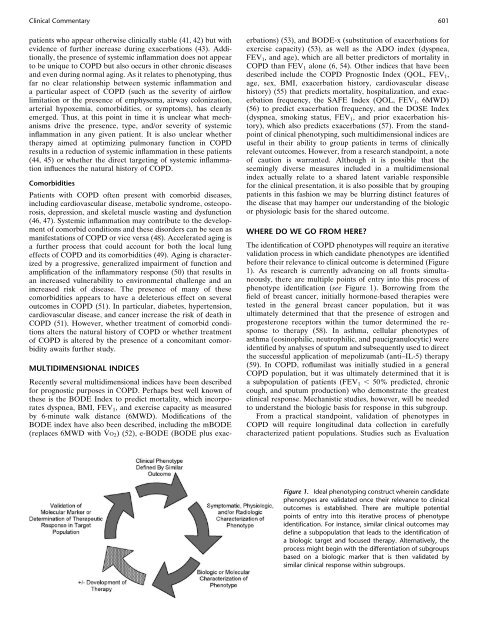


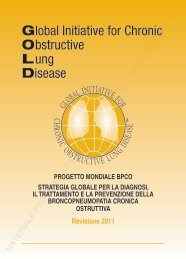
![Di Bari [NO].pdf - GOLD](https://img.yumpu.com/21544924/1/190x143/di-bari-nopdf-gold.jpg?quality=85)


